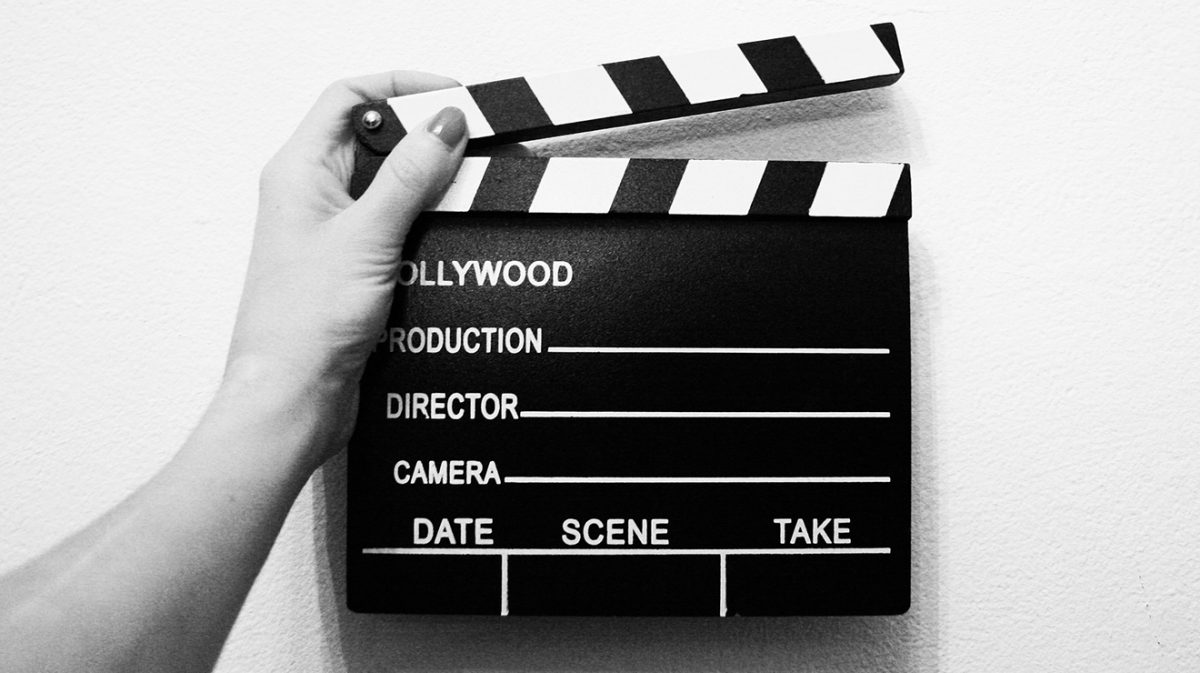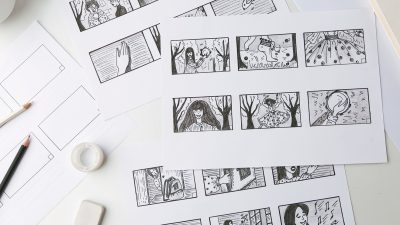You planned your video, prepped your lighting and sound elements, and reached the filming stage. But wait – before you yell “Action!” you still have a few things to get in place. Here’s the rundown on all the steps you need to take to ensure you’re ready to roll.
1. Camera
Shockingly, if you’re going to be making a video, you need a videocamera. This can be one of the most daunting decisions you’ll ever make about gear.
Price and features of cameras vary greatly, and technology changes at a rapid pace. The right choice really comes down to how you anticipate using the camera.
If you need to shoot spur-of-the-moment videos, you might be ok just using your phone. Modern phones can shoot 4K video at a variety of frames per second, so they are much more capable than you might think.
For videos that require specialty shots, like panning, a wide-angle lens, manual focus, or specific depths of field, you’ll need to acquire a more specialized apparatus. Your budget will likely be the biggest factor in determining what you can buy.
Don’t forget – you can rent out equipment if you’re not ready to commit to a big purchase. It’s a great way to try out gear and see if it might be the right fit going forward.
You can also borrow gear, or use other sources to keep costs down.
2. Learn the manual
Before you begin, the person filming should spend time going over the manual and learning how to use the various features of the camera in order to achieve the best results. Experiment and keep a cheat sheet handy if needed.
If your camera didn’t come with a manual, search for tips and tricks on how to use it online. Often, you can find a wealth of information about how to get specific shots for specific cameras.
3. Supply Kit
You should have an extra battery, extra SD card, lens-cleaning cloth, battery charger/power cord for the camera, and a tripod. Those are all standard accessories for any kind of shoot.
Less common, but often just as necessary, are bottles of water, make-up, aspirin or ibuprofen, translucent anti-shine powder, tape, foam board, rope or string, large clamps, and a sheet that can serve as a backdrop in a pinch.
Determine what kind of shoot you’re dealing with, and choose your supply kit wisely. Bring your supply kit anywhere that you go to film.
4. Audio Equipment
The audio equipment you’ll need for your shoot depends on a variety of factors:
- What kind of shoot is it?
- Are you outdoors or inside?
- Is natural light an option?
- How many people will be talking?
- How close will the camera be?
- Do you have any assistants?
- Do you need to capture ambient noises?
- What kind of power sources are available?
- Of course, your budget is also a factor.
By far, the most common microphones used for filming are lavalier mics, shotgun mics, and omnidirectional mics.
- Lavalier (or lapel) mics are ideal for capturing dialogue. Go wireless if you’re filming at a distance, or simply need to avoid wires.
- Shotgun mics capture directional sound, meaning they mainly pick up sounds from the direction they are pointed in. They’re a great option for a variety of situations. They can be camera-mounted, boom mounted, or placed on a stand.
- Omnidirectional mics capture sounds from all directions. For ambient or background noises, they’re an excellent choice.
For more details on getting the audio right, read our recent tutorial on sound and audio for filming.
5. Lighting Equipment
Our in-depth tutorial on lighting for video will help you decide what’s needed here. This could include a variety of light sources, or possibly nothing if you’re shooting outdoors.
Last Minute Tips Before You Roll Camera
You’re on location and all of your parts are in place. Now you’re ready to shoot your video! A few things to keep mind as you get to work:
1. Rule of Thirds
An old standby, this is the theory that while framing your shot, you should mentally divide the visual space into thirds using two straight lines, or nine blocks. (An explanation of the Rule of Thirds here.) Positioning visual points of interest along these lines, rather than centering your subject, complements how we usually view an image and tends to feel more natural.
2. Optical Zoom
Whenever possible, use the optical zoom option, which uses the lens to achieve a high-quality zoom. This is a preferable alternative to the digital zoom, which effectively just enlarges the center portion of the shot, leading to a lesser quality image.
3. Shoot B-Roll
Your b-roll footage consists of visuals that might come in handy during the editing process, to fill in gaps or provide context. Usually, it’s not specifically laid out in a storyboard. Still, you should find it easy to capture during the filming process.
Think ahead about what would make useful b-roll material, and allow time for shooting it. Say, for example, you’re filming interviews with your team at your company. You might shoot b-roll including the outside of your building, the workspace during crunch time, close-ups of team members on the job, and so on.
If you need more tips on optimizing your process, check out this blog post on how to save time on video production.
Note: The experts say you can expect to shoot from 2 to 5 minutes of final-product footage per day of filming. So for a short video, give yourself and your production team a day for filming. And enjoy!
Have any questions, or something to add? Comment below, or tweet to us at @SproutVideo. We look forward to it!








